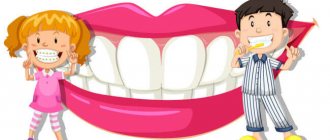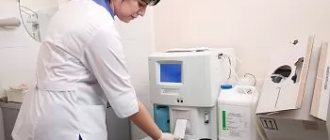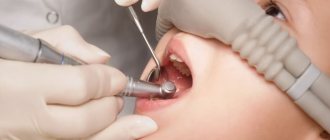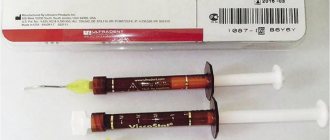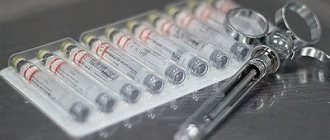Dental topical anesthesia is one of the types of local anesthesia, which is carried out by applying an anesthetic directly to the gum surface around the tooth. For this reason, it is also known as superficial, and it is used to reduce the patient’s sensitivity and freely carry out all necessary dental procedures. This may be necessary during the extraction of loose milk units in children, the injection of pain medications into the gums of patients who are sensitive to pain, and in a number of other situations. This method is not effective enough, but is optimal for small-scale and complex procedures that do not require injection anesthesia.
Application anesthesia is also used in the dental department of CELT in Moscow in order to eliminate any discomfort in patients. Our dentists use safe and effective new generation products that have proven themselves well. Their selection occurs on an individual basis, which eliminates the risk of complications due to the presence of contraindications. Our clinic is multidisciplinary and has been operating in the domestic market of paid medical services for almost three decades. We have a powerful diagnostic and treatment base and provide treatment in accordance with international standards. You can find out the price of topical anesthesia by going to the “Services and Prices” tab. To avoid misunderstandings, we recommend that you check the numbers with our information line operators or during a consultation with a doctor.
Application anesthesia - 100 rubles.
Consultation with a general practitioner—RUB 1,000.
At CELT you can get advice from a dental specialist.
- The cost of a consultation with a dentist-therapist is 1,000
Make an appointment
Indications and contraindications for topical anesthesia in dentistry
As already mentioned, pain relief using the application method occurs due to lubrication and application of the drug to the surface of the gums, thereby reducing the sensitivity of the nerve endings. Its duration of action is about ten minutes, which is sufficient for minor dental interventions on the oral mucosa, dental pulp and hard dental tissues.
Indications for the use of topical anesthesia:
- Anesthesia of the injection area before injection anesthesia in children and pain-sensitive patients;
- Removal of small areas of gum that have separated from the tooth (gingivectomy);
- Removal of mobile primary teeth in pediatric patients;
- Excision of the hood of wisdom teeth on the lower jaw;
- Extraction of highly mobile units in adult patients suffering from stage 4 periodontitis;
- Professional oral hygiene, in particular – removal of subgingival tartar;
- Therapeutic manipulations for periodontitis and stomatitis;
- Preparation of units for crowns or the process of trying them on.
Contraindications to the use of topical anesthesia:
- Acute form of diseases of the cardiovascular system;
- Recent heart attack or stroke;
- Individual intolerance to the drug;
- Inflammatory processes of the bladder and urethra in the acute phase, which can provoke serious pain and cause the spread of infection to other organs, including prostatitis and orchitis in men, as well as cystitis and urethritis; Pathological conditions of the endocrine system.
Pregnancy can be called a relative contraindication. On the one hand, applying the drug to the gum mucosa prevents its penetration into the general bloodstream and will not affect the development of the fetus. On the other hand, the influence of modern gels or pastes for application of pain relief on the process of pregnancy has not yet been studied. Therefore, it should be used only in extreme cases.
Application dental anesthesia: advantages and disadvantages
Dentists consider the main advantage of this type of anesthesia to be its rapid action. In addition, they highlight a number of others, such as:
- Elimination of any discomfort for the patient during dental procedures;
- High level of safety for the patient’s body due to the exclusion of the penetration of substances used into the bloodstream;
- Painlessness of the anesthesia procedure itself;
- Possibility of using the latest generation of drugs even for children;
- Sufficient duration of pain relief to perform simple dental procedures.
As for the disadvantages, they are the following:
- Difficulty in calculating and maintaining dosage;
- Lack of deep action and, as a result, limitations in use;
- Vasodilator effect and increased risk of bleeding;
- Exceeding the dose may result in the anesthetic entering the bloodstream and causing an allergic reaction.
Medical sedation
Medical sedation is an intermediate link between general and local anesthesia. The essence of the technique is for the child to inhale gas vapors (usually nitrous oxide). As a result, the excitement of the nervous system decreases, reactions and fear are dulled, but the little patient remains conscious, breathes independently and can follow the doctor’s commands.
The procedure is harmless to the body and helps to carry out even long-term manipulations without exposing the child to excessive stress. As a rule, sedation is combined with local anesthesia.
Features of local application anesthesia in dentistry
If the dentist uses the drug for the first time, testing for individual intolerance is required. Procedure steps:
- Antiseptic treatment of the patient's oral cavity;
- Isolation of the treated area of the oral cavity with cotton rolls or rubber dam;
- Removing saliva from it;
- The method of applying the drug varies depending on the form of its release (the solution is applied using a cotton swab or gauze ball, an aerosol is sprayed, a gel or paste is applied to the mucous membrane in a thin layer);
- The drug is left for a period of one to five minutes, excluding its contact with saliva;
- Before proceeding with dental procedures, all its remains are removed and sensitivity is checked using a special probe;
- If the anesthesia effect is not enough, the procedure is repeated following all the steps described above.
Side effects
The most common side effect of drugs used for topical pain relief are allergic manifestations:
- Despite the high quality of anesthetics, it is not recommended to use them independently at home.
rash on the skin/oral mucosa;
- swelling in the area where the anesthetic composition is used;
- redness of tissues treated with anesthetic.
The risk of complications increases if the recommended dosage is not followed.
Despite the high quality of anesthetics, it is not recommended to use them yourself at home.
If the drug enters the respiratory tract, the following may occur:
- hoarseness of voice;
- difficulty breathing.
In the process of restoring full sensitivity to the oral mucosa, soft tissue injury may occur as a result of uncontrolled biting.
Types of topical anesthesia
Depending on the mechanism of action of the active components of topical anesthesia preparations, different types are distinguished:
| Mechanism of action | Description | Drugs |
| Cauterization of the area | A rather dangerous type of anesthesia, which, if used incorrectly, can cause burns to the pulp and soft tissues. |
|
| Local anesthesia | Relief of sensitivity of nerve endings in the treated area. | Preparations based on:
|
| Dehydration | Painful sensations are relieved through the use of drugs with dehydration properties that dehydrate dentin and tooth enamel. |
|
| Physiological action | Pain relief occurs due to the effect on receptors that block the transmission of impulses to nerve endings. | Pastes:
|
The choice of type of anesthesia is carried out on an individual basis. CELT dentists do not use aggressive substances for cauterization, and other drugs are selected taking into account the individual indications of the patient.
Mechanism of action
Injections of drugs are not required for topical anesthesia. A local anesthetic is applied directly to the area of manipulation. The substance turns off the sensitivity of local receptors, which leads to the disappearance of pain at the point of application of the medicine.
Application anesthesia is based on blocking sensory receptors. At the moment of treating the surface of the mucous membrane, the product is instantly absorbed into the nerve endings (the average penetration depth is 3-5 mm), preventing the flow of nerve impulses. The result of anesthesia appears within a few minutes, reaching its maximum after half an hour, anesthetizing the adjacent hard and soft tissues.
NOTE! The mucous membrane of the nose, larynx, and pharynx is completely permeated with blood capillaries, therefore non-injection anesthesia with terminal anesthetics requires less time due to faster absorption of the drug by tissues.
Painkillers used in topical anesthesia
As already mentioned, drugs for superficial pain relief are produced in different forms. Each of them has its own advantages for use in certain areas of the mucosa, so the selection, again, occurs on an individual basis. The best option is a gel: it is difficult to wash off with saliva, and therefore provides a good effect from the first application. In addition, solutions, ointments, aerosols, films and sprays are available to dentists. They are made on the basis of substances, the description of which can be found in the table below:
| Substance | Description and action |
| Anestezin/Benzocaine | It is a white crystalline powder with a bitter taste that can lead to a numbing sensation on the tongue. It dissolves well in alcohol, but is used for pain relief in the form of a powder or oil solution. Pain relief occurs by reducing the permeability of the cell membrane to sodium ions, displacing calcium from receptors and blocking the occurrence and conduction of nerve impulses. The analgesic effect from it is not very strong, but it is quite long-lasting (up to twenty minutes). |
| Dicaine/Tetracaine | Highly effective anesthetic in the form of odorless white crystal powder. Its use is contraindicated for children, so it is used exclusively for adults in the form of a three percent solution. The drug is well suited for pulp anesthesia. It penetrates well into the mucous membrane and provides a good effect. It is almost fifteen times higher than when using novocaine. |
| Lidocaine | Local anesthetic drug for anesthesia of the mucous membranes of the oral cavity. It is available as a gel (3%), ointment (3%) and aerosol (10%). Due to its ability to penetrate relatively deeply into the mucous membrane, it provides a good effect. The latter occurs one minute after using the aerosol and lasts about 15 minutes. Due to the fact that lidocaine in the form of an aerosol has an effect on the respiratory system, it cannot be used for diseases of the respiratory system, as this can cause difficulty breathing and even stop it completely. As for the gel, it is used to anesthetize large surfaces of the mucous membrane due to the relatively low concentration of the active substance and minimal toxicity. |
The most popular means
The range of painkillers used for topical anesthesia is quite wide. This makes it possible to choose the appropriate option in each individual case.
Diplen LH
The main disadvantage of the application method is the difficulty of determining the dosage, but this in no way applies to the drug Diplen LH. The product is produced in the form of a film with sorption ability.
The product consists of several layers (hydrophobic, hydrophilic) impregnated with Lidocaine and Chlorhexidine.
It is enough to glue the film to a certain area of the gum, within one minute the desired effect occurs (pain-relieving, antibacterial). If an injection is planned, the puncture is made directly through the film.
Disilane
The product is available in the form of a spray and is used in dentistry for procedures whose duration does not exceed 15 minutes. The active ingredient is benzocaine; a small concentration allows the drug to be used to block gum sensitivity in children (over 5 years old).
Topex
Release form: gel. Topex is applied using the application method of anesthesia to the gums 1-2 minutes before the start of treatment procedures. This option allows you to eliminate a minor dental problem. The active substance is benzocaine.
Desensetin
Spray based on lidocaine, available in 15 ml bottles. The product has excellent thixotropic properties and quickly acts on the receptors of the treated area. It can be applied pointwise; the aromatic additive makes the procedure pleasant.
Lidoxor
Lidoxor anesthetic gel, in addition to the main component - lidocaine, contains extracts of medicinal plants and flavoring. Available in 3 flavor categories: citrus, green apple, wild berry. The product begins to act within 1-2 minutes after treating the problem area.
Application infiltration anesthesia: features and types
Infiltration anesthesia is a subtype of application anesthesia, which involves the introduction of an anesthetic drug into the soft gum tissues and, in fact, soaking them with it in order to innervate the area. Another name for it sounds like “freezing” - due to the numbness of the tongue, lips and cheeks that it provokes... In the process, the nerve impulse going from the pulp to the brain is stopped. In this case, the effect is achieved immediately after administration of the drug, and disappears as its components are broken down.
The procedure is quite safe due to the use of drugs with a minimum concentration of active substances. The solution is administered:
- Under the mucous membrane of the mouth;
- Directly under the skin;
- In the tissue around the bone (periosteum).
According to the method of administration, infiltration anesthesia is of two types:
- Direct - the solution is injected directly into the area to be manipulated;
- Indirect - the solution is injected into the area adjacent to the affected area so that it penetrates deep into the tissue.
Drugs
The pain-relieving effect during topical anesthesia is provided by means that include:
- lidocaine;
- tetracaine;
- benzocaine.
Preparations with these substances are produced under such commercial names as Perylene ultra, Peril-spray, Xylonor, Kamistad, etc. Some lidocaine sprays are available in various fruit flavors and are indispensable in pediatric dentistry.
Along with the above remedies, the effective analgesic effect of propolis, a natural substance that is a product of the vital activity of bees, has been proven. It should be used with extreme caution, since propolis has strong allergenic properties.
Substances included in anesthetics
Advantages and disadvantages of application infiltration anesthesia
As already mentioned, this type of pain relief is safe for the patient’s body due to the low concentration of active substances. Its other advantages are:
- Providing immediate effect;
- Rapid removal of substances from the body;
- Simplicity of the procedure technique;
- Minimal tissue trauma;
- Prolonged effect;
- Anesthetizing a group of nerves.
As for the disadvantages, they are as follows:
- Insufficiently good effect or its almost complete absence in diseases of the oral cavity of a purulent and inflammatory nature;
- The patient feels an unpleasant bitter taste of the solution after its administration;
- Insufficiently good effect on areas of dense bone formations;
- No effect for tissues that are deep.
Stages of administration of infiltration application anesthesia
Infiltration anesthesia is used in the treatment of caries, pulpitis and other dental diseases, as well as tooth extraction (including complex ones) for prosthetics and removal of tumors of the oral mucosa. Regardless of the type of anesthesia, the algorithm for its implementation is as follows:
- Treating the injection area with an antiseptic;
- Exposing the transitional fold of the patient's oral cavity;
- Place the end of the needle on it at an angle of 45° relative to the alveolus;
- Inserting a needle into the bone to a depth of 5 to 15 mm;
- Carefully slowly introduce the solution.
The procedure is not performed if the patient has inflammation in the oral cavity or a malignant neoplasm.
Anesthetics with a high vasoconstrictor dilution of 1:100000
In pediatric practice, they are used only for a number of surgical interventions for the purpose of hemostasis. The duration of anesthesia is 75 minutes for dental pulp and 360 minutes for soft tissues.
Such outpatient interventions include the removal of an impacted, supernumerary tooth, apperculectomy, cystectomy, plastic surgery of the frenulum and vestibule of the oral cavity, and removal of a tumor. The use of anesthetics with high dilutions of epinephrine for other types of dental interventions is unjustified and disproportionate to the volume of intervention.

